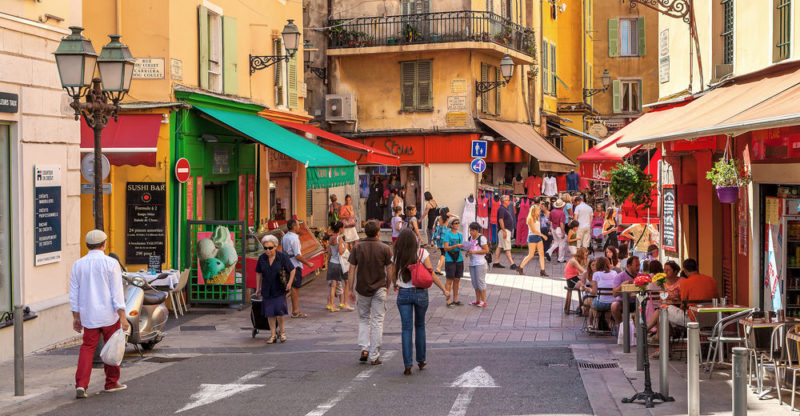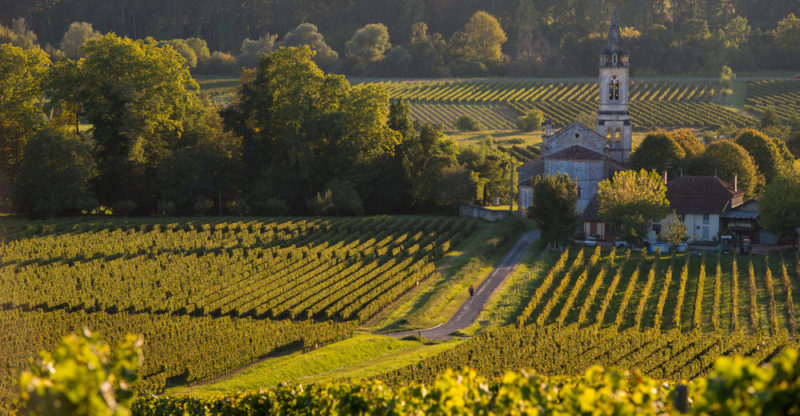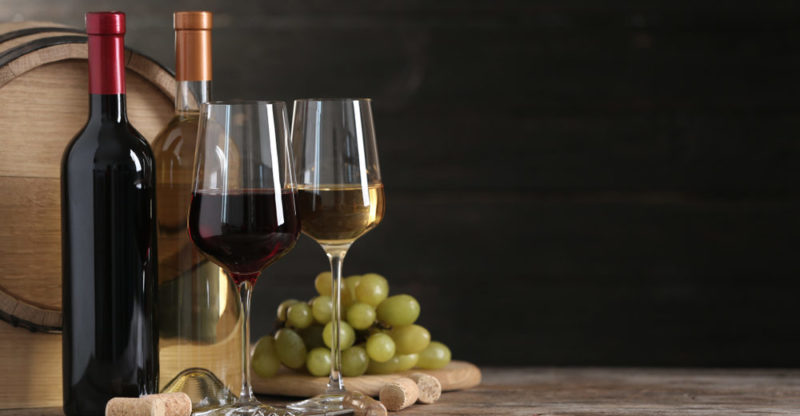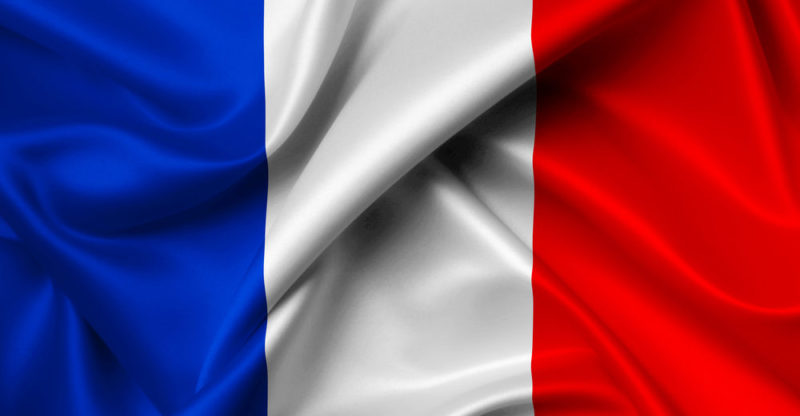We explain everything about France, what the climate is like, the flora and fauna of this country. In addition, its characteristics, traditions, economy and more.
France
France (or the French Republic) is a sovereign country located in Western Europe and a member of the European Union . It has a total area, between islands and mainland, of 675,417 km 2 and its capital is Paris, one of the most touristic cities in the world, which is crossed by the Seine River.
The mainland of France is bordered to the south by the Mediterranean Sea , Italy , and Monaco; to the southwest with the Cantabrian Sea, Andorra and Spain ; to the west with the Atlantic Ocean ; to the north with the English Channel, the North Sea, Belgium and the United Kingdom (with which it is linked by an underground tunnel through the English Channel) and to the east with Luxembourg, Switzerland and Germany .
Characteristics of France
- language . The official language of France is French, a language that comes from Latin along with Spanish and Italian.
- Population . More than 67 million people live in France, most of them distributed on the European continent and a minority living in French overseas territories. The most populous cities in the country are Paris, Marseille and Lyon. The population of France comes, for the most part, from Celtic peoples, although from the 19th century France began to receive a large number of immigrants.
- religion . France allows religious freedom and is a secular state. Approximately half of its population professes the Catholic religion and the rest of the inhabitants professes other religions, such as Muslim or Jewish , or atheism .
- Patriotic symbols . The main symbols of France are the flag, the anthem (known as La Marseillaise), the motto "liberty, equality and fraternity" (emerged in the French Revolution ) and the coat of arms.
- Currency . The official currency of France is, since 2002, the euro. Previously, the French franc was used.
- form of government . France is a semi-presidential republic led by a president (who is head of state) who appoints a prime minister (who is head of government).
- Education . France has a compulsory secular and public education system for all children between the ages of 6 and 16. The educational system is divided into: first grade, which includes schooling between the ages of 6 and 11; second grade, which includes middle or secondary education between 12 and 16 years old, and higher education, made up of universities. France is a country with more than 80 public universities.
- Health . According to the World Health Organization (WHO), France has one of the best health systems in the world, thanks to its infrastructure, health insurance, coverage for a large number of the population, among other factors.

As of a reform carried out in 2016, the French territory located in Europe was divided into 13 main administrative regions, which are made up of departments. These regions comprise the 22 formerly existing regions.
In addition, the French territory includes five overseas departments : Guadeloupe and Martinique (located in the Caribbean Sea), French Guiana (located in South America), Mayotte and Réunion (located in the Indian Ocean) and other collectivities.
The French regions are:
- Pays de la Loire (Pays de la Loire) . It is a region located in the east of the country, which is crossed by the Loire River and its capital is Nantes.
- Brittany (Britain) . It is a region located in the southwest of the country and its capital is Rennes.
- Normandy (Normandy) . It is a region located in the north of the country and its capital is Rouen.
- Hauts de France (Upper France) . It is a region located in the northeast of the country and its capital is Lille.
- Ile de France (Isle of France) . It is the most populated French region and is located in the north of the country. It's capital is Paris.
- Grand Est (Great East) . It is a region located in the northeast of the country and its capital is Strasbourg.
- Bourgogne – Franche Comté (Burgundy Franche-Comté) . It is a region located in the center-east of the country and its capital is Dijon.
- Center – Val de Loire (Centre – Loire Valley) . It is a region located in the center of the country and its capital is Orleans.
- Nouvelle-Aquitaine (New Aquitaine) . It is the largest region in France and is located in the south-west of the country. Its capital is Bordeaux.
- Auvergne – Rhône – Alpes (Auvergne – Rhône – Alps) . It is a region located in the southeast of the country and its capital is the city of Lyon.
- Occitanie (Occitanie) . It is a region located in the south of the country and its capital is Toulouse.
- Provence – Alpes – Côte d'Azur (Provence – Alpes – Côte d'Azur) . It is a region located in the southeast of the country and its capital is Marseille.
- Corse (Corsica) . It is an island located in the Mediterranean Sea and its capital is Ajaccio.
Relief of France

France is the largest country in Western Europe , since it has a territory of 675,417 km 2 . Its continental territory is surrounded by bodies of water , such as the Mediterranean Sea (to the south), the North Sea and the English Channel (to the north), and the Atlantic Ocean (to the west). In addition, it is crossed by rivers such as the Loire, the Seine and the Garonne.
Most of the French territory is a plain , however, it also has important massifs such as the Massif Central, which is the largest French massif and is located in the center-south of the country.
France has in its territory mountain ranges such as the Pyrenees (located between Spain and France), the Alps (in which Mont Blanc (4,808 m) is the highest peak in Western Europe) and the Vosges mountain range (in the northeast from the country).
Climate of France

France is a country with a temperate and pleasant climate, although this varies according to the geographical area.
- Mediterranean climate . This type of climate is the one that occurs in the southern part of the country. It is characterized by hot, dry and sunny summers and cold and rainy winters.
- Oceanic climate . It is a type of temperate climate that is located on the western margin of France. It is characterized by its hot summers and cool winters and by its high humidity and large presence of precipitation.
- continental climate . This type of climate occurs on the eastern side of the country and is characterized by low rainfall and a wide temperature range (with average temperatures of 24 °C, which can reach 40 °C in summer).
- Alpine climate . This type of climate is found in the mountainous areas of France and is characterized by long, cold winters and short, not very hot summers.
Flora and fauna of France

The flora of France is very varied thanks to its different climates , reliefs and soils . Plant species such as beech and chestnut can be found in the Central Massif area . In the subalpine area you can see dwarf pines and junipers.
In the northern part of the country there are oak, poplar, willow and birch forests and to the south you can find mulberry trees, vines, olive trees and laurel herbs .
As for its fauna, it is also abundant and varied: the largest mammals are deer and foxes , and in the Pyrenees and Alps you can find brown bears, alpine hares and chamois. Wild boars, deer, ferrets and martens live in the forest area.
Reptiles such as snakes and turtles can be found in the southern part of the country , and various species of fish live in the marine areas , such as cod, sardines and dolphins.
French art and culture
France is a country with a rich and prolific history , with intellectuals and artists who stood out in fields such as philosophy, painting and letters. Some of the main representatives of French culture are:
In art :
- Eugene Delacroix (1798-1863) . He was a French painter and one of the main representatives of Romanticism . Delacroix innovated in the use of color and his art influenced the later Impressionist movement. Some of his most representative works are Liberty Leading the People , The Death of Sardanapalus and Dante's Boat .
- Edouard Manet (1832-1883) . He was a French painter considered the father of French modern art and the forerunner of Impressionism (although he was never part of the movement). Some of his works are Breakfast on the Grass , Music at the Tuileries , and Olympia .
- Edgar Degas (1834-1917) . He was a French painter and sculptor and one of the referents of Impressionism. Many of his works were set in the context of ballet and some of his most notable paintings are The Ballet Class , The Bellelli Family , and The Bathtub .
- Paul Cezanne (1839-1906) . He was a French painter who became famous posthumously and is considered one of the fathers of modern art. He excelled in the representation of landscapes, still life and domestic scenes and everyday life. His most notable works are The Card Players , Still Life with Apples , and The Great Bathers .
- Claudio Monet (1840-1926) . He was a French painter who was an exponent of the Impressionist movement, a current characterized by the use of pure colors, brief brushstrokes and the use of light . Some of his most notable works are Impression, Rising Sun , The Waterlily Pond, and Twilight in Venice .
- Auguste Renoir (1841-1919) . He was a French impressionist painter who was characterized by his paintings of landscapes and nudes in which he conveyed happy and calm situations. His most notable works are The Rowers' Luncheon , Dance at the Moulin de la Galette, and La Grenouillère .
- Henri Rousseau (1844-1910) . He was a French painter exponent of naive art (spontaneous or self-taught art). His work was characterized by dreamlike and strong colors. His most notable paintings are The Dream , Hungry Lion , and Myself .
- Paul Gauguin (1848-1903) . He was a post-impressionist French painter who stood out for his synthesis, characterized by the use of simple shapes and flat colors. He spent a large part of his life in Tahiti (Polynesia) and in his art he portrayed the landscapes and inhabitants of that area of the Pacific. His most notable works are Yellow Christ , Women of Tahiti, and Breasts with Red Flowers .
- Henri Matisse (1869-1954) . He was a French painter considered a reference in modern art and 20th century painting . He belonged to Fauvism , a movement that was characterized by the use of color. Some of the emblematic works of this artist are The Dance , Blue Nude and Woman with a Hat .
- Marcel Duchamp (1887-1968) . He was a French painter and chess player considered one of the most influential artists of the 20th century. He was an exponent of Dadaism and ready-mades (giving everyday objects the status of a work of art) with works that focused on the innovative and fleeting. Some of his most outstanding works are Bicycle Wheel, Nude Descending a Staircase and The Fountain .
- Moliere (1622-1673) . He was a French playwright and poet and one of the greatest literary exponents of France. He was the author of comedies and farces that included social and political criticism of the time. Some of his most recognized works are The Miser , Don Juan and Tartufo .
- Henri Beyle (Stendhal) (1783-1842) . He was a French writer and one of the founders of the modern novel, among his most outstanding works are Red and black , La charterhouse of Parma and Armancia .
- Honoré de Balzac (1799-1850) . He was a French novelist and one of the greatest exponents of the French realist novel. His masterpiece was The Human Comedy , a project in which he brought together more than 80 novels and stories.
- Victor Hugo (1802-1885) . He was a French poet and novelist who stood out in a wide variety of genres and was an exponent of Romanticism with works of great social content. His most notable works are Les Miserables , Our Lady of Paris, and The Man Who Laughs .
- Charles Baudelaire (1821-1867) . He was a French poet and critic and one of the main representatives of symbolism (a literary movement that sought to decipher metaphysical and world enigmas with poetry ). His emblematic work was Las flores del mal and is considered the forerunner of modern poetry.
- Gustave Flaubert (1821-1880) . He was a French writer and one of the best novelists of his country. His most recognized work is Madame Bovary and, in addition, he wrote others such as Sentimental Education and Salambó .
- Marcel Proust (1871-1922) . He was a French novelist world-renowned for his autobiographical work In Search of Lost Time , a novel that is collected in seven volumes.
- Paul Valery (1871-1945) . He was a French writer and essayist and one of the most renowned French poets. His most notable works are The Young Grim Reaper , The Marine Cemetery , and My Faust .
- Simone de Beauvoir (1908-1986) . She was a French writer and philosopher known for being a defender of women's rights. She was a forerunner of the feminist movement and wrote novels , essays , and diaries, including The Second Sex , The Guest , and Memoirs of a Formal Young Woman .
- Albert Camus (1913-1960) . He was a French writer, journalist and philosopher, author of famous works such as The Fall , The Stranger and The Plague . He was the winner of the Nobel Prize for Literature in 1957 and a great influence of existentialist thought can be seen in his work.
In philosophy :
- Rene Descartes (1596-1650) . He was a French philosopher and mathematician and one of the exponents of the Scientific Revolution of the 17th century. He is considered the father of modern philosophy and analytical geometry. Among his great contributions are rationalist thoughts and methodical doubt.
- Blaise Pascal (1623-1662) . He was a French mathematician, physicist and philosopher. He made great contributions in the field of mathematics and physics (such as the laws of probability and Pascal's principle of pressure), and in philosophy his ideas were evidenced in works such as Pensamientos and Cartas provinciales .
- Montesquieu (1689-1755) . He was a French philosopher belonging to the enlightened movement of the eighteenth century. One of his main contributions was the notion of the division of powers within the State (developed in his work The Spirit of the Laws ) and he is considered one of the forerunners of modern liberalism .
- Voltaire (1694-1778) . He was a French philosopher and lawyer and one of the main exponents of the Enlightenment . He defended ideas and principles such as secularism, equality and human rights .
- Dennis Diderot (1713-1784) . He was a French philosopher and writer of the Enlightenment. Among his works, La Encyclopédie stands out , a compendium of knowledge known until the 18th century. He had a materialistic and deistic thought.
- August Comte (1798-1857) . He was a French philosopher and the father of positivism (theory that understood science as the only source of knowledge ) and of sociology . Among his contributions, the law of the three states stood out, in which he affirmed that science passed through two stages (the theological and the metaphysical) until reaching the definitive stage: positivism.
- Jean-Paul Sartre (1905-1980) . He was a French philosopher and writer and one of the greatest exponents of existentialism . His ideas spanned disciplines such as philosophy, literature, and sociology. Some of his most notable works are Being and Nothingness , The Flies , and Critique of Dialectical Reason .
- Michael Foucault (1926-1984) . He was a French philosopher and sociologist who stood out in the study of topics such as psychiatry, mental health, sexuality, power relations, among others. Some of his works are Discipline and Punish , History of Madness in Classical Times, and Words and Things .
- Jacques Derrida (1930-2004) . He was a French philosopher who developed the idea of deconstruction, understood as the tool to dismantle concepts and analyze prevailing structures. Some of his most relevant works are Writing and Difference , Dissemination and Grammatology .
French traditions and customs
- Gastronomy . France is a country recognized worldwide for its gastronomy. Among the most outstanding dishes and foods are: raclette (type of cheese), ratatouille (vegetable dish), croissant (pastry product), foie gras (duck or goose liver), coq au vin (rooster or chicken stew) , crêpes (disk-shaped dough), aligot (side dish), soupe à l' oignon (onion soup), quiche lorraine (savory tart), cassoulet (stew), macarons (sweets), escargots (snails), moules- frites (mussels with French fries), baguette (type of bread), among many others. Due to its great wine culture and development, wine is one of the most popular drinks in the country.
- Fashion . French fashion is well known in the world and the city of Paris is one of the great capitals of textile design. Among the most prominent designers in France are Coco Chanel, Yves Saint Laurent, Jean Paul Gaultier, Hubert de Givenchy, Pierre Cardin, Christian Dior, Nina Ricci, among others.
- Sport . The most popular sport in France is soccer and within the most recognized clubs are Paris Saint Germain, Olympique de Marseille and Saint-Etienne. Other popular sports include rugby, basketball, cycling, tennis and motor racing. Major sporting events such as the Roland Garros tournament (tennis), the French Grand Prix (motor racing) and the Tour de France (cycling) are held on French territory. One of the most widespread games in France is petanque, which is played in parks and squares and consists of throwing metal balls and trying to position them as close as possible to the jack (the largest ball previously thrown by a player).
- National holidays . One of the festivals that extends throughout the entire French territory is the one celebrated on July 14 in commemoration of the taking of the Bastille (1789). In addition, there are public holidays in France: New Year, Christmas, Labor Day, Easter Monday, Victory Day 1945, among others.
- Festivities . The most popular parties and festivals in France are the Candelaria party (in which crepes are prepared), the Nimes fairs (a city in the south of the country), the Nice carnival, the Music party, the April fish , among many others.
French economy
 France is one of the main economies in the world and the second in Europe , behind Germany. For this country, international trade occupies a place of great importance and exports primary products from the livestock industry and agriculture. Some of the products that France exports are: wheat, potatoes, dairy products, pork, poultry and fruits, such as apples, grapes, pears, peaches and melons.
France is one of the main economies in the world and the second in Europe , behind Germany. For this country, international trade occupies a place of great importance and exports primary products from the livestock industry and agriculture. Some of the products that France exports are: wheat, potatoes, dairy products, pork, poultry and fruits, such as apples, grapes, pears, peaches and melons.Among its economic resources , winemaking stands out , an activity that positions France as the world's second largest producer of wine, behind Italy.
Much of the French economy is based on the service sector and a large percentage of the workforce is employed there. France is one of the most visited countries in the world, so the hotel and tourism industry are highly developed activities and are the ones that generate the most income for the country. Within tertiary activities, items such as commerce and restaurants also stand out.
France is also one of the most industrialized countries in the world, many of the most recognized multinationals have their headquarters or offices in this country. Some of the areas in which it stands out are: the chemical, aeronautical, automotive, telecommunications, cosmetics, and pharmaceutical industries, among others.
This country is in 46th place in the ranking of the Human Development Index carried out by the United Nations Organization , which measures the life expectancy, the level of education and the GDP per capita of a nation.
French form of government
 France has a form of government called a semi-presidential republic . The country is under the command of a president, who is the head of state and is elected by universal suffrage for a five-year term. The president is in charge of appointing the prime minister, who is head of government, and the ministers and secretaries.
France has a form of government called a semi-presidential republic . The country is under the command of a president, who is the head of state and is elected by universal suffrage for a five-year term. The president is in charge of appointing the prime minister, who is head of government, and the ministers and secretaries.The French legislative power is represented by the Parliament which is made up of the National Assembly and the Senate. The French Senate is made up of 348 representatives and the National Assembly has 577 deputies. Both chambers are based in Paris.
The highest power within the French judiciary is held by the Court of Cassation, and other important political institutions in France are the Constitutional Council and the Council of State.
Tourism in France
For several years, France has been among the top five most visited countries in the world . Paris, its capital, is one of the most chosen destinations by world tourism.Tourists who come to France are attracted by its culture, its history, its cities, its landscapes and its wines and gastronomy.
Some of the most visited places in France are:
- The Louvre museum, Notre Dame, Moulin Rouge and the Eiffel tower in Paris.
- The palace of Versailles.
- Mont Saint Michel, in Normandy.
- The Alps.
- Regions and cities such as Alsace, Toulouse, Lyon and Marseille.
- The Loire Valley.
- The Blue Coast.
- The wine routes.
The above content published at Collaborative Research Group is for informational and educational purposes only and has been developed by referring to reliable sources and recommendations from experts. We do not have any contact with official entities nor do we intend to replace the information that they emit.
MA student of the TransAtlantic Masters program at UNC-Chapel Hill. Political Science with a focus on European Studies. Expressed ideas are open to revision. He not only covers Technical articles but also has skills in the fields of SEO, graphics, web development and coding. .
Leave a reply
Your email address will not be published. Required fields are marked *Recent post

Sport: What Is It, Types, Risks, Features, Characteristics and Examples

Dogs: Emergence, Features, Characteristics, Feeding and Breeds

Story: Definition, Elements, Structure, Features and Characteristics

